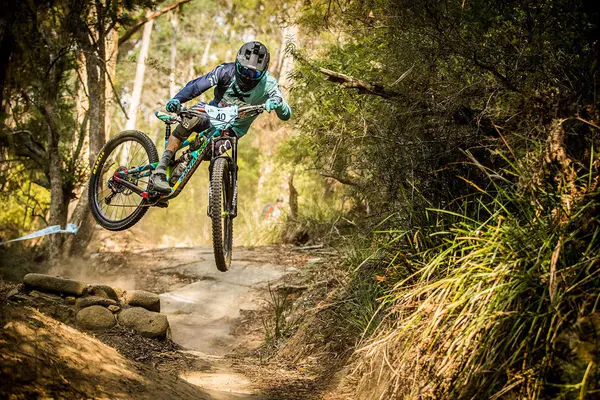When it comes to wall climbing, the right attire is crucial for ensuring safety, comfort, and optimal performance. Climbing involves a range of movements that require flexibility, strength, and balance, and your clothing should support these physical demands. Additionally, proper gear can help prevent injuries and enhance your overall climbing experience, whether you’re tackling an indoor wall or a challenging outdoor route. This guide will walk you through the essential pieces of climbing apparel, layering strategies for different weather conditions, and key safety considerations to keep in mind.
SEE ALSO: How to Build Endurance Mountain Biking
Climbing Apparel
Climbing Shoes
Neutral Shoes: With a more relaxed fit, these shoes are great for beginners and long climbs, offering comfort while still providing adequate performance.
Flat Shoes: Often used for slab climbing or crack climbing, flat shoes allow for better foot placement on less aggressive terrain.
Key Features:
Fit: Climbing shoes should fit snugly without causing pain. They often run smaller than regular shoes, and finding the right fit might require trying on multiple sizes.
Materials: Leather shoes stretch over time, while synthetic materials maintain their shape, which can affect the long-term fit.
Sizing Considerations: Consider the type of climbing you’ll be doing when choosing a size. Tighter fits are better for technical climbs, while a more relaxed fit is preferable for all-day comfort.
Tips on Choosing the Right Shoe:
When selecting climbing shoes, think about the type of climbing you do most often. If you’re primarily bouldering or tackling steep routes, a downturned shoe may be the best option. For general indoor climbing or multi-pitch routes, a neutral or slightly downturned shoe might be more appropriate. Always try on shoes at the end of the day when your feet are slightly swollen to ensure the best fit.
Climbing Pants/Shorts
Fabric Options:
Breathable: Look for materials that allow air to circulate, keeping you cool during intense climbs.
Quick-Drying: Fabrics that wick away moisture and dry quickly are ideal, especially for outdoor climbs where you may encounter wet conditions.
Durable: Climbing can be tough on clothing, so opt for materials that can withstand abrasion.
Stretch: Stretchy fabrics enable greater freedom of movement, which is essential for reaching challenging holds.
Features:
Gusseted Crotch: This design feature prevents the pants from restricting your movement during wide stances or high steps.
Articulated Knees: Pre-shaped knees allow for better mobility and comfort when climbing.
Reinforced Seat and Knees: These areas are prone to wear and tear, so reinforced sections can extend the life of your pants.
Considerations:
Loose vs. Fitted: While some climbers prefer the freedom of loose-fitting pants, others opt for a more fitted style that stays out of the way. Choose what feels most comfortable for your climbing style.
Length: Pants that are too long can get caught on your shoes or gear. Ensure they are the right length for your height.
Comfort for Climbing Movement: The most important factor is that your pants allow you to move freely and comfortably during your climb.
Climbing Shirts/Tops
The right top can keep you comfortable by regulating temperature and moisture levels.
Breathable, Moisture-Wicking Materials:
Synthetic Blends: Materials like polyester and nylon are excellent for wicking sweat away from the body, keeping you dry during intense climbs.
Merino Wool: This natural fiber is breathable, moisture-wicking, and offers some odor resistance, making it a good option for longer climbs.
Features:
Fitted or Loose Fit: Some climbers prefer a fitted top that doesn’t get in the way, while others like a looser fit for added airflow.
Thumbholes: These can keep your sleeves in place and add a bit of warmth in cooler conditions.
Raglan Sleeves: These sleeves provide a greater range of motion, which is especially useful when reaching for distant holds.
Considerations:
Comfort for Layering: If you’re climbing in cooler conditions, you’ll want a top that layers well under other clothing.
Protection from Sun/Wind: In outdoor settings, consider tops with UV protection or wind resistance.
Layering for Different Conditions
Warm Weather
In warm weather, your clothing should help keep you cool and dry.
Breathable, Moisture-Wicking Base Layers:
A lightweight base layer will wick sweat away from your skin, keeping you cool and preventing chafing.
Lightweight Climbing Pants or Shorts:
Opt for lightweight, breathable pants or shorts that allow for plenty of airflow.
Short-Sleeved or Sleeveless Shirts:
Choose tops that offer sun protection while keeping you cool.
Sleeveless options can provide maximum ventilation.
Layering Tips:
Adjust Clothing Based on Activity Level: As you climb, your body temperature will rise, so it’s important to be able to shed layers easily.
Layer for Flexibility: Your clothing should allow you to add or remove layers as the temperature changes throughout the day.
Prioritize Breathable Fabrics: To prevent sweat from cooling your body too much, choose fabrics that wick moisture away from your skin.
Safety Considerations
Safety is paramount when climbing, and your clothing choices play a significant role in ensuring you stay safe on the wall.
Avoid Loose Clothing:
Loose clothing can get caught on holds or equipment, posing a safety risk.
Avoid Baggy Sleeves:
Baggy sleeves can obstruct your view of holds or your grip, reducing your climbing efficiency and safety.
Wear Appropriate Footwear:
Climbing shoes are essential for grip and protection, helping you maintain control on the wall.
Conclusion
For those looking to gear up for their next climb, consider exploring reputable online retailers that offer a wide selection of climbing apparel and equipment. Investing in the right gear can make a significant difference in your climbing experience. Whether you’re a seasoned climber or just starting out, wearing the right clothing can make your climbing experience safer, more comfortable, and ultimately more enjoyable. By carefully selecting your climbing shoes, pants, and tops, and layering appropriately for the weather, you can focus on the climb ahead without worrying about your gear.


